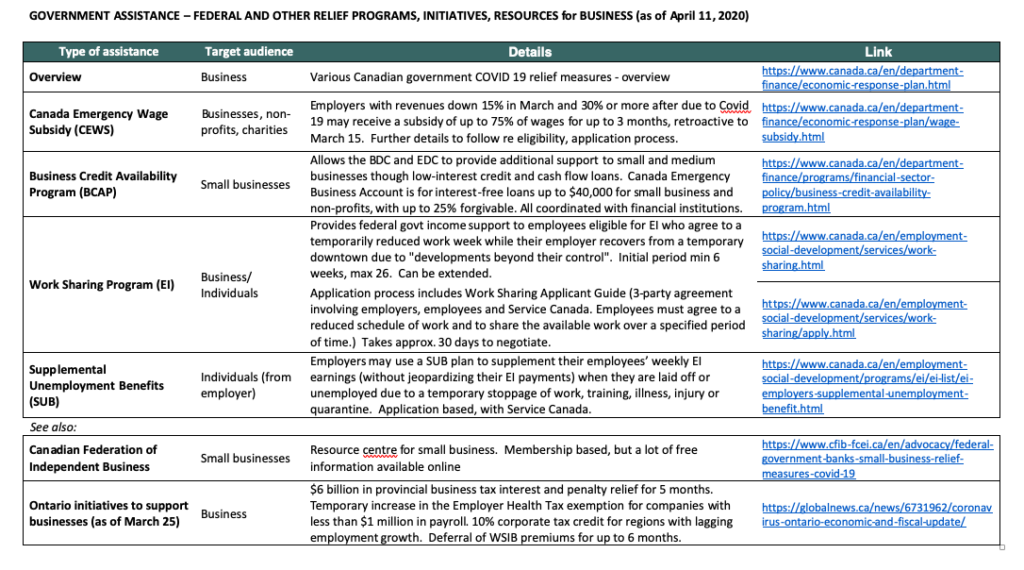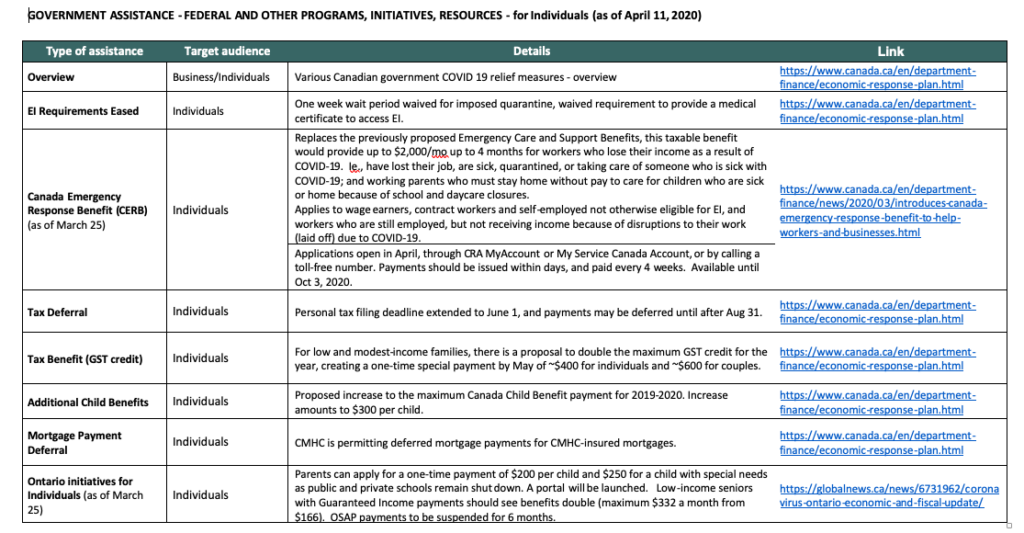Hi everyone. Hope you’re keeping well and on track, whichever one or many that may be. The inundation of public health and government updates these days are truly head-spinning. It’s challenging trying to make sense of all the messages, and balance all of the personal and professional concerns. It’s remarkable to see how individuals, business leaders and government are responding.
Further to my March 14 post and March 17 update (which includes links to various resources), I’ve been working with clients on various strategies to try to stay afloat and do everything they can for their staff, in the context of several months of cancellation or disruption in upcoming business, with an uncertain end.
In an effort to organize, clarify and compare the various support mechanisms that have been announced, below is a chart! (Don’t you love a good one-pager??) summarizing what we’ve been presented with so far, subject to further updates. Actually two charts: one for business, the other for individuals.


Feel free to contact me if you’d like a copy of either or both charts, or if you would like to discuss any of these initiatives in more detail, and what may be applicable to you or your business.
In February, I was talking with clients about workplace health & safety policies, flex-work and business continuity plans. Now it’s mostly a deep-dive into government resources, parameters around layoffs, cuts in pay or hours of work, ROE codes etc. It’s definitely been one of the most challenging times in my career, but I am inspired by my clients and the dedication they are showing to their businesses and their staff.
Fortunately, now those employers who made sacrifices and found creative ways to keep their staff engaged and employed a few weeks ago, when their business pipelines had essentially shut down for the foreseeable future, are going to be supported by additional government support. What a strong message to their staff though, to take those steps on their behalf, before the relief efforts were known.
Please let me know if I can be of any HR assistance to you or your business, or what other topics you are interested in. Some of my clients have offered to share their experience and stories with fellow business leaders also.
Good luck and stay well!
